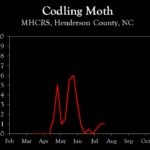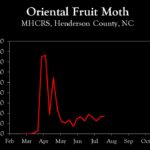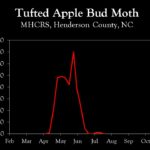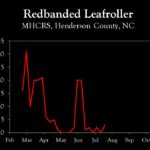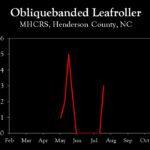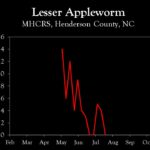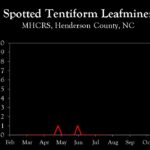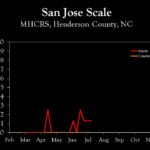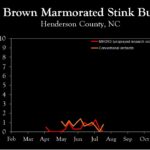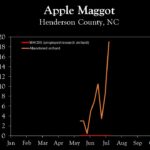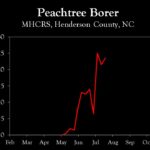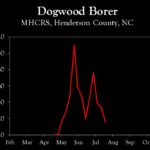WNC Orchard Insect Pest Populations – July 22, 2025
go.ncsu.edu/readext?1083823
en Español / em Português
El inglés es el idioma de control de esta página. En la medida en que haya algún conflicto entre la traducción al inglés y la traducción, el inglés prevalece.
Al hacer clic en el enlace de traducción se activa un servicio de traducción gratuito para convertir la página al español. Al igual que con cualquier traducción por Internet, la conversión no es sensible al contexto y puede que no traduzca el texto en su significado original. NC State Extension no garantiza la exactitud del texto traducido. Por favor, tenga en cuenta que algunas aplicaciones y/o servicios pueden no funcionar como se espera cuando se traducen.
Português
Inglês é o idioma de controle desta página. Na medida que haja algum conflito entre o texto original em Inglês e a tradução, o Inglês prevalece.
Ao clicar no link de tradução, um serviço gratuito de tradução será ativado para converter a página para o Português. Como em qualquer tradução pela internet, a conversão não é sensivel ao contexto e pode não ocorrer a tradução para o significado orginal. O serviço de Extensão da Carolina do Norte (NC State Extension) não garante a exatidão do texto traduzido. Por favor, observe que algumas funções ou serviços podem não funcionar como esperado após a tradução.
English
English is the controlling language of this page. To the extent there is any conflict between the English text and the translation, English controls.
Clicking on the translation link activates a free translation service to convert the page to Spanish. As with any Internet translation, the conversion is not context-sensitive and may not translate the text to its original meaning. NC State Extension does not guarantee the accuracy of the translated text. Please note that some applications and/or services may not function as expected when translated.
Collapse ▲ As we move into the latter part of July and into August, the diversity of potential insect pests will begin to increase. While codling moth remains a potential concern in some orchards, other insect pests to be aware of this time of year include oriental fruit moth (OFM), apple maggot and brown marmorated stink bug (BMSB). The relatively warm summer has contributed to earlier appearance of some of these pests compared to past years.
As we move into the latter part of July and into August, the diversity of potential insect pests will begin to increase. While codling moth remains a potential concern in some orchards, other insect pests to be aware of this time of year include oriental fruit moth (OFM), apple maggot and brown marmorated stink bug (BMSB). The relatively warm summer has contributed to earlier appearance of some of these pests compared to past years.
Note that not all orchards are susceptible to these pests, and monitoring with traps is the most effective way of knowing the need for insecticide applications. Assuming a pest is not a problem in the absence of monitoring is a risky decision.
Codling moth. About 1765 DD have accumulated in Henderson County, which coincides with about 75% egg hatch of the second generation. At lower elevations in Cleveland County, egg hatch of the third generation is just beginning. In many orchards insecticides are likely not necessary unless damage has been observed up to this point in time, or if pheromone trap captures exceed 5 to 10 per week.
OFM. Beginning in late July, 3rd generation OFM often begins to increase in numbers, and overlapping 3rd and 4th generations can contribute to continued increase in numbers into August and September. However, with increased pyrethroid use starting in August for BMSB, OFM has been less of an issue for the past 8 to 10 years, because pyrethroids are quite effective against this insect. Again, monitoring adult activity with pheromone traps is important to detect potentially damaging populations, which generally occur with captures >10 moths per trap using an OFM L2 lure. It should also be noted that late season OFM can be a problem in orchards that have used mating disruption for codling moth and OFM, because the residual release of OFM pheromone generally lasts only 90 to 100 days with hand-applied dispensers. Another option is to apply an application of sprayable OFM pheromone (CheckMate OFM-F) in mid August.
BMSB. In lower elevations, a total of 864 DD have accumulated, which is equivalent to about 30% emergence of first generation adults. In these locations, if a pyrethroid has not been applied in the past week where BMSB is a concern, one should be made soon. In Henderson County, 665 DD have accumulated. Initial emergence of adults begins at about 740 DD, which is predicted to occur early next week. This is about two weeks earlier than in recent years. To date numbers have been low, but we’ll continue trapping into September.
Apple Maggot. Usually apple maggot emergence begins in mid to late August, but we have captured several in traps adjacent to an abandoned orchard during the past couple of weeks. Orchards near abandoned sites are most vulnerable to apple maggot. The timing of pyrethroids applied for BMSB usually coincides with apple maggot emergence. If apple maggot is a concern and BMSB is not a concern, Admire (or a generic product) is an effective alternative.
2025 Average Weekly Trap Captures
| HENDERSON COUNTY | |||
| Insects per trap | |||
| Jul 7 | Jul 14 | Jul 21 | |
| Codling moth | 0.5 | 1.0 | 1.0 |
| Oriental fruit moth | 12.5 | 16.5 | 17.0 |
| Tufted apple bud moth | 1.0 | 1.0 | 0.0 |
| Redbanded leafroller | 2.0 | 0.0 | 3.0 |
| Obliquebanded leafroller | 0.0 | 0.0 | 3.0 |
| Lesser appleworm | 5.0 | 4.0 | 0.0 |
| Apple maggot (unsprayed research orchards) | 0.0 | 0.0 | 0.0 |
| Apple maggot (abandoned orchard) | 3.5 | 8.5 | 19.0 |
| Brown marmorated stink bug (commercial orchards) | 0.6 | 0.0 | 0.8 |
| Brown marmorated stink bug (unsprayed research orchards) | 1.3 | 0.3 | 0.0 |
| Spotted tentiform leafminer | 0.0 | 0.0 | 0.0 |
| Dogwood borer | 38.0 | 34.0 | 16.0 |
| Peachtree borer | 25.0 | 21.5 | 23.5 |
| Lesser peachtree borer | 17.0 | 15.5 | 20.0 |
| San Jose scale | 1.3 | 1.3 | 1.3 |
*Note that these averages illustrate only the timing of insect emergence and fluctuations in populations, and are not representative of population levels in any given orchard. The only way to have an accurate assessment of an individual orchard’s populations is to set up traps in that orchard.
2025 Accumulated Degree Days
| HENDERSON COUNTY | ||||
| Jul 7 | Jul 14 | Jul 21 | ||
| Codling moth (Biofix: April 21) | 1391 | 1568 | 1757 | |
| Oriental fruit moth (Biofix: March 17) | 2147 | 2359 | 2583 | |
| Tufted apple bud moth (Biofix: April 14) | 1824 | 2036 | 2261 | |



